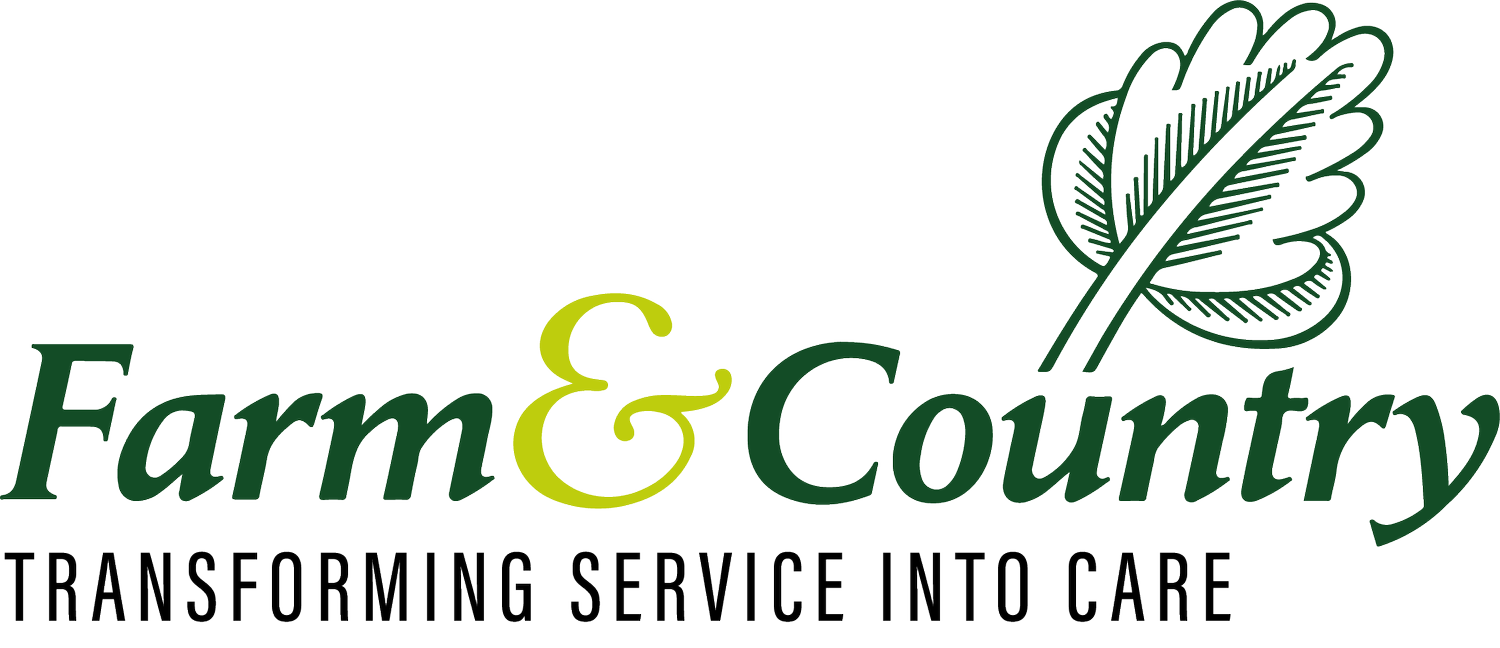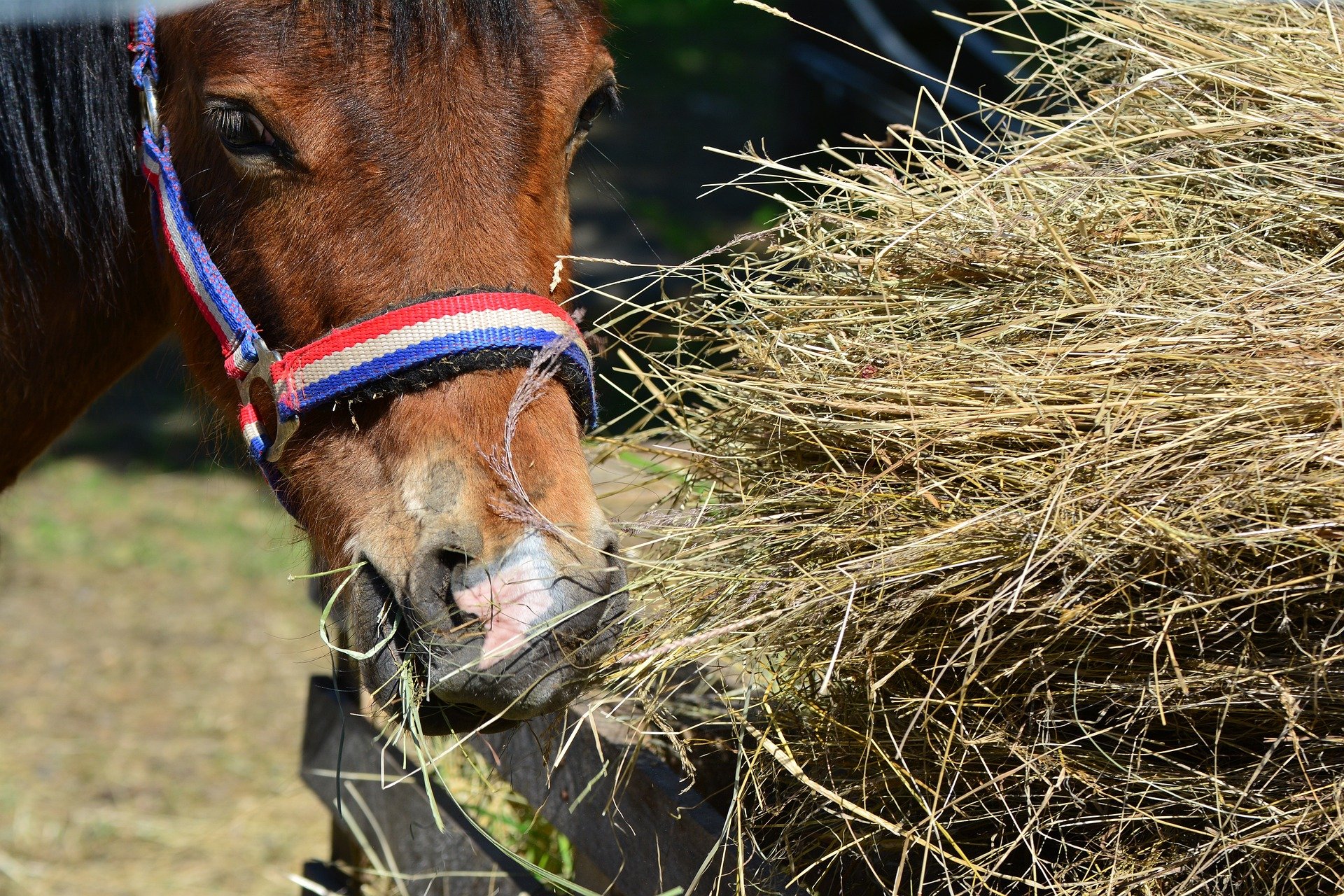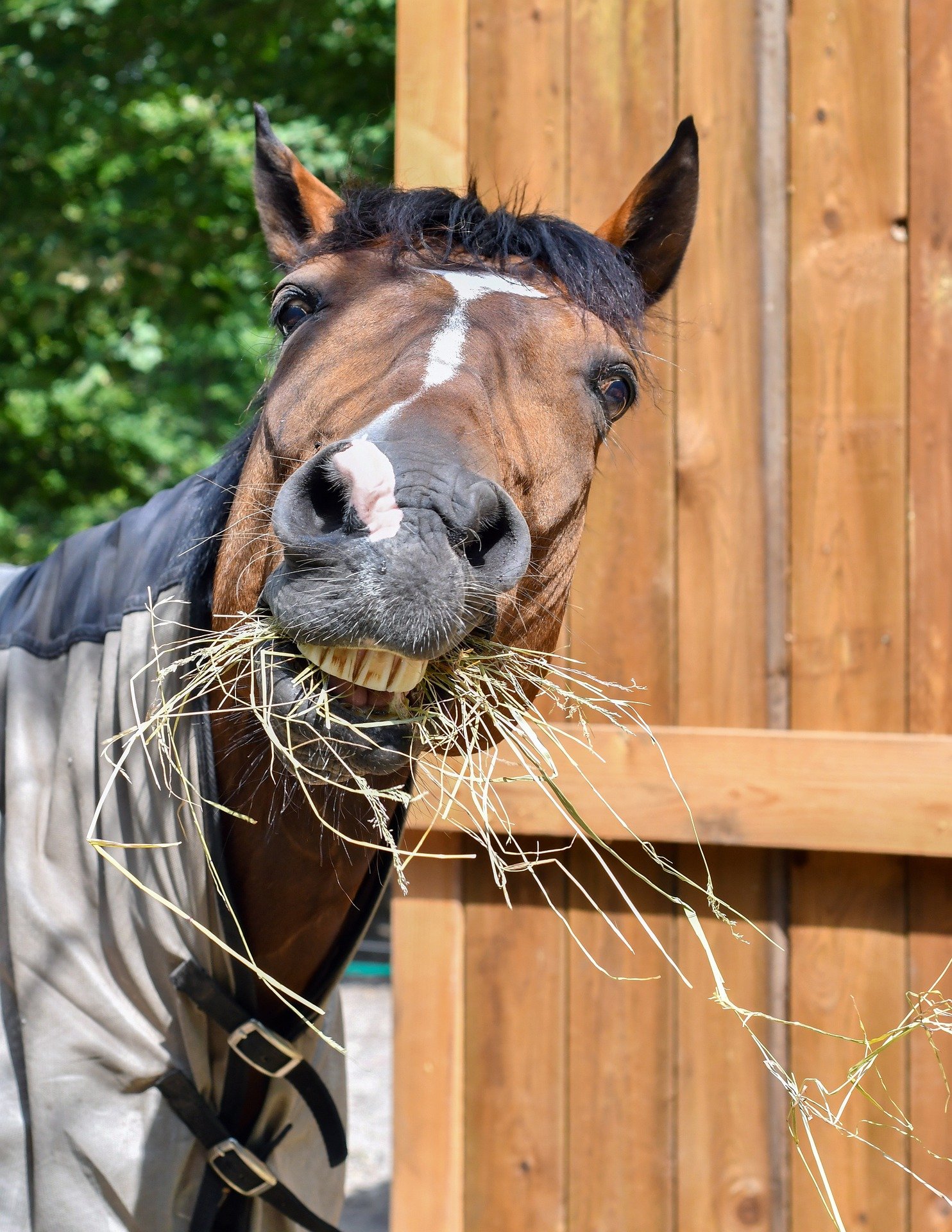Environmental enrichment for the horse - The need to forage
The most commonly used definition of environmental enrichment is by Shepherdson (1998); “an animal husbandry principle that seeks to enhance the quality of captive animal care by identifying and providing the environmental stimuli necessary for optimal psychological and physiological well-being. Therefore, environmental enrichment is the additions and/or alterations made to a domesticated animal's environment with the goal of improving welfare (1).
There are generally two types of environmental enrichment; natural and behavioural.
The natural approach to enrichment would be to provide an animal with their natural environment in a domesticated setting. This approach was suggested by Carl Hagenbeck in 1907 who adored landscape paintings. Hagenbeck created large zoo enclosures with moats in remembrance of his paintings and this lead the way to providing a zoo animal with a natural enclosure, instead of a traditional cage.
The idea of natural enrichment is to mimic the horse's natural environment in a domesticated setting. This could include mimicking space, companionship, forage sources, water sources and general environment.
Natural enrichment is difficult to fully achieve in an artificial setting due to time and resource constraints and what is realistic when managing the domesticated horse. However, it could be partially achieved by increasing turnout time, allowing social interactions between horses and providing sufficient forage opportunities.
The behavioural approach to enrichment was first introduced in 1925 by primatologist Robert Yerkes who suggested that human-made devices could help encourage play in primate enclosures. These devices are designed to fulfil the needs to express appetitive behaviour (the searching behaviour) and consummatory (the consuming behaviour)(2).
There are many enrichment devices on the equestrian market including licks, foodballs and mirrors. Whilst the devices may look artificial, the behaviour which is expressed can be the same as if it was in natural circumstances. It has been suggested an animal has an inherent need to express appetitive behaviour and their welfare could be compromised if they are unable to. For example, it has been shown that a hen will go through the process of building a nest, even if there is a nest already provided for her (3).
To help improve the enrichment of horses it is first important to understand what behaviours the horse is most internally motivated to perform. Due to the scope of this subject, the horse's need to forage is evident and therefore will be the focus of this article.
The horse's innate need to forage
A lot of behaviour that an animal expresses is due to external stimuli, for example a horse sees a predator and flees or a stallion may sniff and show the flehmen response to a mare in season. However, does it matter to the horse if they do not have the opportunity to show these behaviours?
This depends on whether the horse has the internal motivation to perform the behaviour. Although a horse is unlikely to have the internal motivation to flee from a predator unless one is actually present, they may have the internal motivation to want to sniff and show the flehmen response to a mare in season due to their hormones.
Internal stimuli may also cause a behavioural response, even with a lack of external stimuli. For example, a hungry horse will have the internal motivation to express foraging behaviour in a barren stable. The internal motivation to express the behaviour, for example foraging, will only cease if the horse is able to express the appetitive behaviour of foraging (finding the food) and then the consummatory behaviour of foraging (chewing and swallowing the food).
The consequences of not being able to express appetitive and consummatory foraging behaviour can lead to frustration, stress and the development of stereotypical behaviour.
Horses eat for 16-18 hours per day and would have access to approximately more than 50 different types of grasses and herbs to taste test in their natural environment. The horse will browse on trees and hedges, dig up plants and roots and try different fruits and seeds at their leisure. However, in the domesticated environment, the horse is often kept in paddocks with a limited variety of grass species. Further, it is common for domesticated horses to have their daily forage ration hung up in a haynet in the stable.
Although we can supply our horses with their nutritional needs by feeding scientifically formulated complete feeds and additional supplements, the horse may not be mentally and physically stimulated like they would be in their natural environment (4).
Increasing turnout
A study (5) looked into three turnout options and the effect they had on horse behaviour; daily training without free exercise, two-hour turnout before training and two-hour turnout after training. The study found that horses became more restless in the stable when they were not given any turnout, horses travelled a shorter distance in the field when they were ridden before turnout compared to afterwards, and horses trotted and cantered in the field less when they were ridden before turnout.
Another study (6) found that horses trotted, cantered and bucked more frequently and grazed less when they were allowed two hours of turnout per week, compared to 12 hours of turnout per week. The results suggest that horses show restlessness, frustration and more physical activity when not given sufficient access to free exercise in order to forage and socialise.
The use of straw
Research has found that natural foraging behaviour increased and horses ate less straw when they were provided with multiple forage types, compared to one forage type and summarised that multiple forage could be used as environmental enrichment (7).
Interestingly, straw has been found to be the best bedding with regards to fulfilling the behavioural needs of the horse when compared to peat moss with shavings and wood pellets (8). Horses with a straw bed spent more time lying down and showed the least amount of undesirable behaviour. This may suggest that the additional forage source fulfilled the horse's need to perform appetitive and consummatory behaviour and the horse felt more content to lie down.
Forage provision
The use of haynets has been shown to increase feeding time compared to when fed off the floor (9). In addition, feeding time can be increased by two hours when a horse is fed hay in three double-layered haynets hung in different locations in the stable, compared to when a single haynet is given (10).
The comparison of feeding methods using a hay bag, slow feeder and hay on the floor investigated the behaviour and welfare of a group of horses (11). It found that whilst hay bags may cause some frustration to the horse, they did, along with the slow feeder, increase the time the horse was feeding compared to when the hay was on the floor. The slow feeder also reduced the incidence of stereotypic behaviour (i) in the horse. It could be suggested that whilst a small holed haynet does increase feeding time and therefore will help make hay last longer, it does cause some frustration to the horse.
Therefore, it may be beneficial to slowly introduce the use of a small holed haynet by decreasing the hole size gradually or packing the net lightly to start with. Remember that a horse has an inherent need to express appetitive behaviour so a small amount of hay given on the floor to eat first may prevent some frustration, as they are not trying to eat from the small holed haynet when they are hungry and motivated to forage, which could cause additional frustration.
Artificial enrichment devices
The effect of ad libitum, or restricted hay when combined with or without a popular horse lick made of molasses on the intake and behaviour of horses with and without established crib biting (ii) has been investigated (12). The study concluded that crib biting horses changed their behaviour (eating hay, licking the horse lick, looking over the door, drinking, crib biting etc.) 40 times more during the 30-minute observation period compared to non-crib biting horses.
In addition, crib biting horses licked the supplementary lick 1.5 times more. While the frequency of crib biting did not significantly alter when the horse had access to the molassed lick, it did give them another activity to engage with and possibly increasing natural foraging behaviour.
There are many different flavoured horse licks on the market. A study (13) investigated what flavours horses particularly favoured; they found that cherry, cumin, fenugreek, peppermint, carrot, oregano, rosemary and banana were most accepted by the horse. Apple, garlic, ginger and turmeric were accepted but consumed more slowly and echinacea, nutmeg and coriander were flavours which were not accepted by the horse.
There are a variety of non-edible enrichment items available on the market. One study (14) investigated the long-term interest of horses in ropes and plastic hanging balls. It found that horses did use the items but to a limited extent. This was possibly due to the horses having access to a sufficient supply of forage in the stable and therefore helping to confirm their absolute innate need to express appetitive behaviour and consummatory behaviour.
In addition, a study (15) looked at the use of edible enrichment and non-edible enrichment and found that the amount of agonistic behaviours reduced when group-kept horses had access to straw suggesting the need to forage. In summary, horses interacted with edible enrichment items compared to non-edible.
Summary
The horse's internal need to express appetitive behaviour and consummatory foraging behaviour is evident. Providing the horse with sufficient foraging opportunities and enrichment should not be underestimated as the consequences of lack of foraging opportunity can cause frustration, health complications such as gastric ulceration, the development of stereotypical behaviour and can ultimately compromise welfare.
This could be achieved by making small changes such as increasing turnout time, providing forage in a more natural way, providing more than one type of forage and giving enrichment devices such as foodballs and licks.
Notes
i) stereotypical behaviour can be defined as repetitive, invariant and apparently functionless abnormal behaviours (16)
ii) crib biting is an oral stereotypical behaviour in which the horse grips its incisor teeth onto a solid object, contracts its neck muscles to pull back air (creating the characteristic grunt noise) into the oesophagus (17)
References
1. Coleman, K. and Novak, M.A., (2017). Environmental Enrichment in the 21st Century. ILAR journal, pp.1-13.
2. Young, R. (2013). Environmental Enrichment for Captive Animals. John Wiley & Sons. UK
3. Duncan, I.J., (1998). Behavior and behavioral needs. Poultry science, 77(12), pp.1766-1772.
4. McBane, S. (2007). 100 Ways to Perfect Equine Partnership. David and Charles. UK
5. Werhahn, H., Hessel, E.F., Schulze, H. and Van den Weghe, H.F., 2011. Temporary turnout for free exercise in groups: Effects on the behavior of competition horses housed in single stalls. Journal of Equine Veterinary Science, 31(7), pp.417-425.
6. Chaya, L, Cowan E and McGuire, B. (2006). A note on the relationship between time spent in turnout and behaviour during turnout in horses (Equus caballus). Applied Animal Behaviour Science , Volume 98 , Issue 1 , 155-160
7. Goodwin, D., Davidson, H.P.B. and Harris, P., (2002). Foraging enrichment for stabled horses: effects on behaviour and selection. Equine veterinary journal, 34(7), pp.686-691.
8. Kwiatkowska-Stenzel, A., Sowižska, J. and Witkowska, D., (2016). The effect of different bedding materials used in stable on horses behavior. Journal of Equine Veterinary Science, 42, pp.57-66.
9. Glunk, EC, Hathaway, MR, Weber, WJ, Sheaffer, CC & Martinson, K.L (2014), 'The effect of hay net design on rate of forage consumption when feeding adult horses' Journal of Equine Veterinary Science, vol 34, no. 8, pp. 986-99
10. Ellis, A.D., Redgate, S., Zinchenko, S., Owen, H., Barfoot, C. and Harris, P., (2015). The effect of presenting forage in multi-layered haynets and at multiple sites on nighttime budgets of stabled horses. Applied Animal Behaviour Science, 171, pp.108-116.
11. Rochais, C., Henry, S. and Hausberger, M., (2018). “Hay-bags" and Slow feeders: Testing their impact on horse behaviour and welfare. Applied Animal Behaviour Science, 198, pp.52-59.
12. Moore-Colyer, M.J.S., Hemmings, A.N.D.R.E.W. and Hewer, N., (2016). A preliminary investigation into the effect of ad libitum or restricted hay with or without Horslyx on the intake and switching behaviour of normal and crib biting horses. Livestock Science, 186, pp.59-62.
13. Goodwin, D. Davidson, HBF, Harris, P. (2005). Selection and acceptance of flavours in concentrate diets for stabled horses. Applied Animal Behaviour Science 95 (3-4): 149-164
14. Bulens, A., Dams, A., Van Beirendonck, S., Van Thielen, J. and Driessen, B., (2015). A preliminary study on the long-term interest of horses in ropes and Jolly Balls. Journal of Veterinary Behavior: Clinical Applications and Research, 10(1), pp.83-86.
15. Jørgensen, G.H.M., Liestøl, S.H.O. and Bøe, K.E., (2011). Effects of enrichment items on activity and social interactions in domestic horses (Equus caballus). Applied animal behaviour science, 129(2), pp.100-110.
16. Mason, G.J., (1991). Stereotypies: a critical review. Animal behaviour, 41(6), pp.1015-1037.
17. McGreevy, P. (2012). Equine Behavior - E-Book: A Guide for Veterinarians and Equine Scientists. Saunders. Elsevier.
Figure one: Roberts, K., Hemmings, A.J., McBride, S.D. and Parker, M.O., 2017. Causal factors of oral versus locomotor stereotypy in the horse. Journal of Veterinary Behavior: Clinical Applications and Research, 20, pp.37-43
Further Reading
Clark, F.E., (2017). Cognitive enrichment and welfare: Current approaches and future directions. Animal Behavior and Cognition, 4(1), pp.52-71. Mason, G. and Rushen, J. eds., (2008). Stereotypic animal behaviour: fundamentals and applications to welfare. Cabi.
Mason, G., Clubb, R., Latham, N. and Vickery, S., (2007). Why and how should we use environmental enrichment to tackle stereotypic behaviour?. Applied Animal Behaviour Science, 102(3), pp.163-188.
Original article: https://www.bhs.org.uk/advice-and-information/horse-care/environmental-enrichment-for-the-horse-foraging







